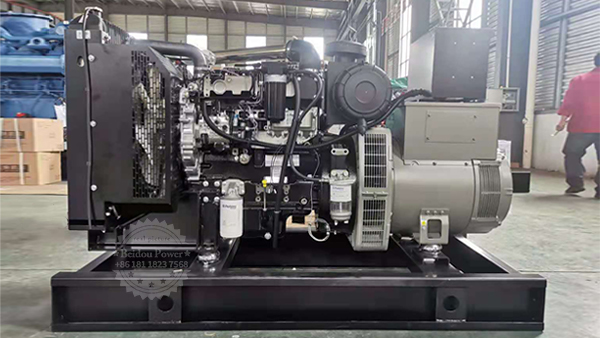Diesel generator set as a backup power supply, in the use of a long time uninterrupted operation. With such a large load, the temperature of the diesel generator becomes a difficulty. In order to maintain stable uninterrupted operation, diesel generators are kept within tolerable temperatures, which requires understanding of temperature rise requirements and cooling methods.
According to the different insulation resistance of diesel generator, its temperature rise requirements are also different. Usually, the temperature of stator windings, excitation windings, iron cores and collector rings is about 80 degrees. If the temperature exceeds 80 degrees, the temperature rise is too high.
Temperature rise is the temperature difference between the diesel generator and the environment, caused by the heat generated by the diesel generator. In the running diesel generator movement, iron damage will be formed in the alternating magnetic field, and copper damage and other stray losses will be formed after the winding is energized. These will raise the temperature of the motor. At the same time, the motor will also exhaust heat. When the same amount of heat is generated as the heat is discharged, an equilibrium state will be reached, and the temperature will no longer rise, but stabilize at a certain level. When heat generation increases or heat removal decreases, the stability is immediately destroyed, so that the temperature continues to rise, increasing the temperature difference, improving heat removal, and achieving a new stability at another higher temperature, but with an increase in temperature difference than before. Next, Kachen power generation equipment will focus on the diesel generator temperature rise and the relationship between the ambient temperature.
Theoretically, the temperature rise of the diesel generator under the rated load should exceed the ambient temperature, but the actual situation is also affected by the ambient temperature and other factors, mainly as follows:
(1) When the temperature drops, the temperature rise of the conventional motor will be slightly reduced. This is mainly because the winding resistance R is reduced and the copper consumption is reduced. When the temperature drops by *℃, x drops by about 0.4 *.
(2) For the self-cooling motor, when the ambient temperature increases by *0C, the temperature rise will increase by *.5~3℃. This is mainly because the winding copper loss increases with the increase of temperature. Therefore, temperature change has a great effect on large and closed motor.
(3) Due to the improvement of thermal conductivity, the temperature rise can be reduced by 0.07~0.38℃ with an average of 0.19℃ for every 10* higher air humidity.
(4) The altitude shall be 1000m as the standard, and the temperature rise shall be 100m per liter. The temperature rise limit shall be increased.
The temperature rise of diesel generator is the key technical index of motor design and operation, which means the heat generation stage of diesel generator. During operation, if the temperature rise of the motor suddenly rises, it indicates that the motor has a fault, or the air duct is blocked or the load is too heavy, and the customer should maintain it as soon as possible.
Post time: Nov-15-2022

